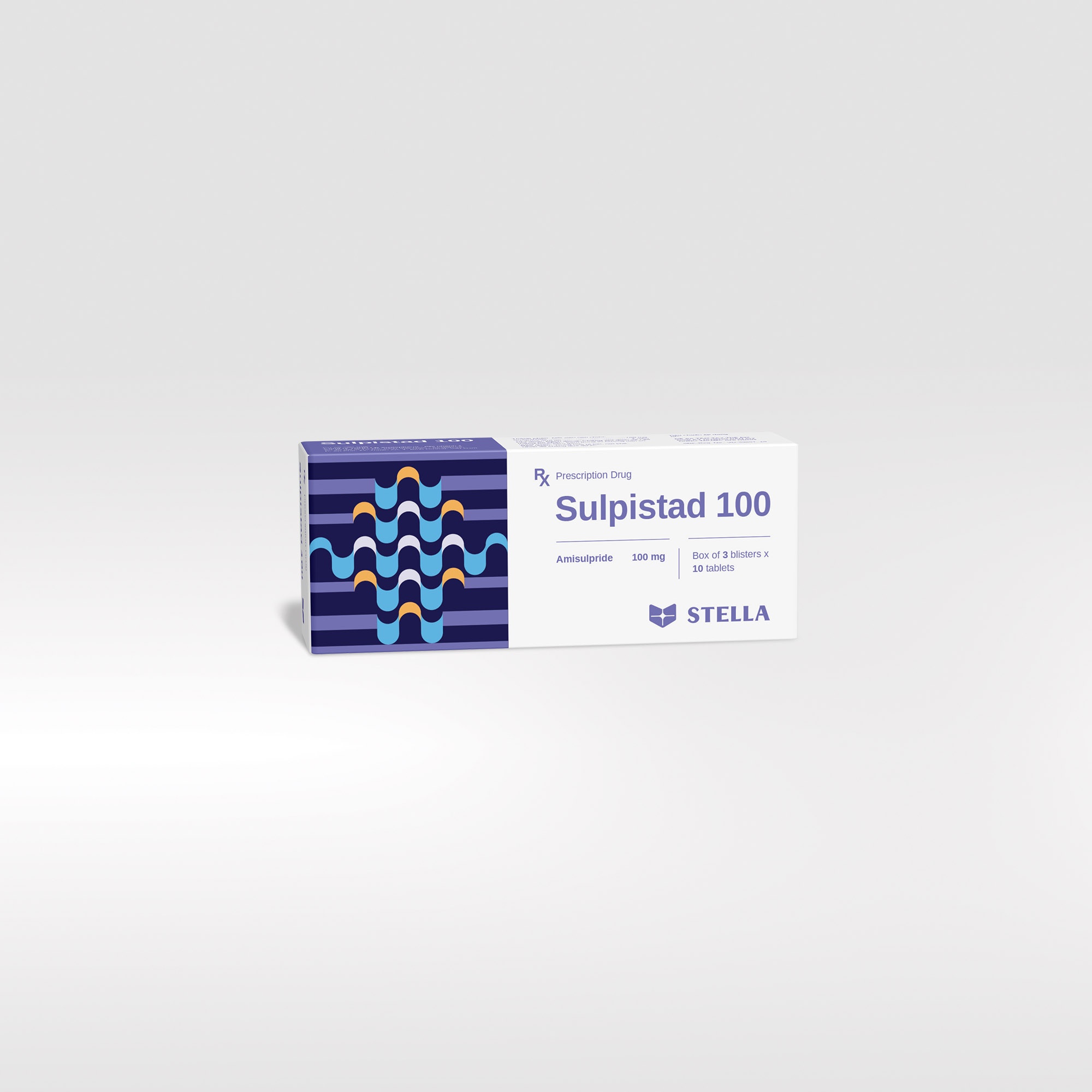Indications:
Sulpistad 100 is indicated for the treatment of acute and chronic schizophrenic disorders, in which positive symptoms (such as delusions, hallucinations, thought disorders) and/or negative symptoms (such as blunted affect, emotional and social withdrawal) are prominent, including patients characterised by predominant negative symptoms.
Dosage:
- Acute psychotic episodes: 400 – 800 mg/day, may be increased up to 1200 mg/day. Doses above 1200 mg/day should not be used. Doses should be adjusted according to individual response.
- Mixed positive and negative symptoms: Doses should be adjusted to obtain optimal control of positive symptoms.
- Maintenance treatment should be established individually with the minimally effective dose.
- Predominant negative symptoms: 50 – 300 mg/day. Doses should be adjusted individually.
- Amisulpride can be administered once daily at oral doses up to 300 mg, higher doses should be administered bid.
- The minimum effective dose should be used.
- Elderly: Amisulpride should be used with particular caution because of a possible risk of hypotension and sedation. Reduction in dosage may also be required because of renal insufficiency.
- Children: The use of amisulpride from puberty to the age of 18 years is not recommended; in children up to puberty amisulpride is contraindicated.
- Renal insufficiency:
+ CrCl 30 – 60 ml/min: The dose should be reduced to half.
+ CrCl 10 – 30 ml/min: The dose should be reduced to a third.
+ CrCl < 10 ml/min: Particular care is recommended.
- Hepatic insufficiency: A dosage reduction should not be necessary.
- Duration of treatment: The duration of treatment should be determined by the treating physician. To avoid withdrawal symptoms treatment should be discontinued gradually.
Usage:
Sulpistad 100 is administered orally. Tablets should be swallowed whole or halved, with a sufficient amount of liquid. Sulpistad 100 can be administered independently from meals.












